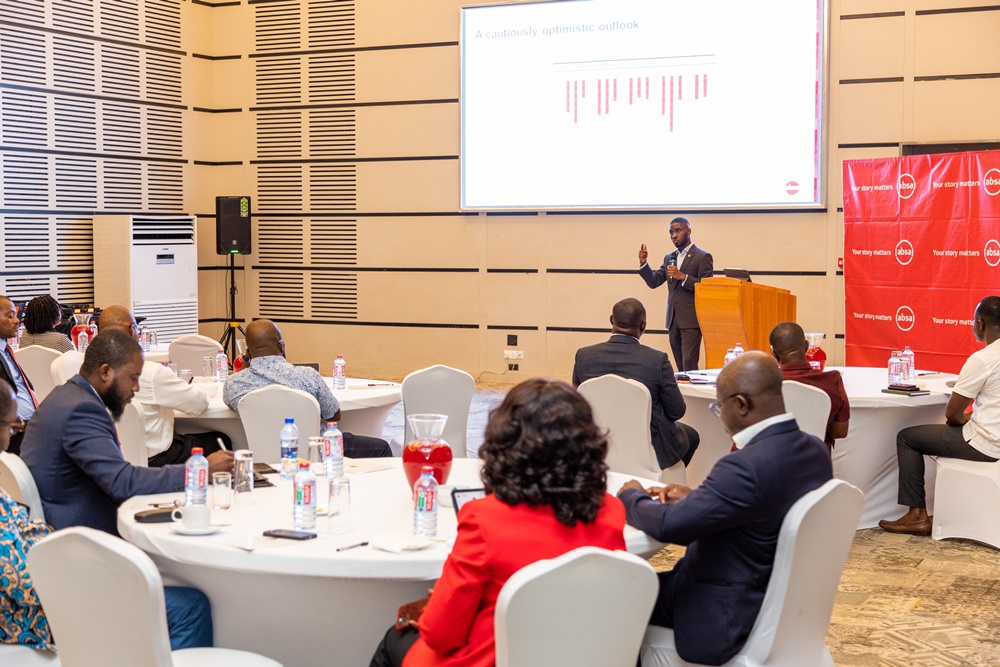
By Effie AMISSAH
The banking industry underpins the financial services industry in the country. Regulated by the Bank of Ghana, the industry provides an avenue where cash, credit and other financial transactions for both individuals and businesses are accessed.
According to the 2023 Price Water House Coopers Banking Survey Report, the banking industry contributed GHC16.21 bn in new loans and advances into the economy between 2021 and 2022. This saw an increase in the total position by 32% from GHC49.41bn to GHC65.62bn. These represent new cash injections into various sectors across the private or public domains towards propelling economic growth.
The strength and resilience of any economy are significantly hinged on the soundness of its financial institutions as they make the provision of financial services readily available to the country.
Banks thus provide a pivotal role in the lives of individuals and businesses and this article seeks to provide a basic understanding of how banks work as well as a good appreciation of some banking terminologies with an emphasis on asset creation.
How banks mainly operate
Banks mainly work as intermediaries: accepting deposits from customers with excess cash and then lending to borrowers, that is, those in need of cash. There are three actors in this transaction: a Depositor, a Lender, and a Borrower.
- The Depositor is one who provides or offers their cash to the bank for safekeeping.
- The Lender refers to a bank that gives out or lends cash to customers who are in need for one reason or the other based on its assessment.
- The Borrower is the person/institution who needs the cash for personal needs or business purposes.
Types of bank customers
Bank customers are mainly classified into two categories, Individuals and Businesses (SMEs and Corporations).
Individuals here refer to Salaried Workers, Students, Pensioners, Petty Traders, etc. That for business are classified as either Small and Medium Size Enterprises (SMEs) or Corporates
Pillars of banking
Banking is hinged on two main pillars: Deposit mobilization (Liabilities generation) and lending to qualifying borrowers (Assets creation).
Liabilities in the broad sense refer to the cash that Depositors give to the banks. These funds are consolidated t and managed for value creation by the bank through varied products such as Savings, Investments and Financial instruments to generate income.
Now let’s delve into the types of assets Banks offer.
What are Assets?
Assets in basic terms refer to the wide array of credit facilities that are granted to bank clients. In the same way, clients visit banks to deposit funds for safekeeping, there are other clients who are also in need of funds for various reasons. Banks then bridge this gap by lending to such clients (borrowers) aimed at meeting their banking needs. It is worth noting that since the funds used in their lending activities are secured from depositors for safekeeping, they have the ultimate responsibility of ensuring that borrowers being lent pay back based on agreed terms.
Such agreed terms include Interest Rates, Fees, Tenor, Repayment mode, etc which are to be adhered to by the borrower to ensure repayment of the facility by the expiry of the tenor.
They do this in accordance with their Credit Risk Acceptance Criteria which are a set of laid down policies and procedures that govern or guard their borrowing activities.
Once a borrower fails to meet these terms, it raises Credit Risk which will be looked at, later.
These assets are mostly in the form of Loans, Overdrafts, or Guarantees.
Types of credit facilities
The type of credit facility offered depends on the nature of the customer in question and their needs.
For the purposes of this article, we will focus on two broad categories, that is, Loans and Overdrafts.
The type applicable to each borrower is based on the type of client involved and the repayment source.
Loans
Loans have fixed repayments which are made either by bullet (one-off payment), monthly, quarterly, yearly, or whichever agreed payment terms are based on how the cash flow is generated.
Once a loan is approved for a customer and disbursed, both principal and interest payments are made based on the agreed payment terms.
Loans come in various forms based on the type of customer and the transaction in question. These include Consumer / Retail / Salaried loans, Local Purchase Orders, Invoice Discounting Facility, Import Finance Facility, Vehicle Finance Facility, Project Loans, etc.
Each loan type is recommended according to its intended use and how the cash flow is generated for repayment. These factors also influence the loan’s duration.
For example, an individual may be prescribed a Salaried Loan because he or she earns a salary. If you are a non-salary earning customer, you need to establish how you generate income to determine which credit facility to prescribe.
A business may go for a Vehicle Finance Facility a Term Loan for importation or a Project Finance Facility based on their need.
Overdraft
Overdrafts on the other hand offer a stop-gap financing limit on a borrower’s account that enables them to withdraw more money than they have in their account. For example, a client with a balance of GHC1,000 will be allowed to withdraw up to let’s say, GHC5,000 for one month because they have an approved Overdraft set on their account. Their balance will then be negative GHC4,000 for the period when the account remains overdrawn until the client repays and returns the account to a positive position.
They are allowed to go in and out of the overdrawn position with interest paid monthly. However, at the end of the expiry, the overdrawn balance must be paid by the client to zero. This also means that per the structure, the client can manage how much interest they pay on the utilization of the overdraft.
From the example above, out of the approved Overdraft of GHC5,000, if the client withdraws only up to GHC3,000 for one week over the one-month approved tenor and returns the account to positive, interest is only paid by the client on the overdrawn GHC3,000 for the number of days the account was overdrawn.
Overdrafts are mainly advanced for Working Capital purposes in meeting cash gaps and as salary advances for salaried workers.
Consumer / Retail / Personal Loans
These types of loans are advanced to individuals in employment with regular income.
The loan is mainly tied to your salary from which the facility will be repaid. The main security for the bank is your employer and their commitment to continue channeling your salary through your account throughout the life of the facility. This is done through an undertaken, provided by your employer to the bank.
Other consumer loans are Pay Advance facilities which are in the form of overdrafts as earlier stated.
How to access credit
Accessing bank credit is actually easy if you are able to prove your repayment source for the facility.
Bear in mind that, banks are mainly in business to make profit and asset creation is one of the main ways to do this.
Banks may drag their feet in granting a facility if they are not convinced that the facility will be self-liquidating, that is, generating the needed cashflow to repay. Without a clear visibility on how you generate income to be able to repay a facility, you may have challenges proving to your bank why a facility should be advanced to you.
Conclusion
We have established the basic workings of a bank and some basic terminologies, the type of client profiles and the type of facilities.
These facilities as established are based on agreed terms and once a client satisfies these terms, depending on the type of facility, your bank may require some collateral to safeguard their interest in the unlikely event of a default.
It’s important to note that collateral does not automatically qualify you for the facility, your cash flow does. The collateral rather provides the bank with additional comfort as a way of safeguarding depositors’ funds since it can be liquidated to pay off your facility when there is a default. This means returning the depositors’ funds, so the bank continues a going concern and continues to stay in operation.
If in doubt or for further information on the above, speak to your bank who will assess your needs and provide a viable asset product that best suits you.
There are various types of securities, and this will be looked at a later date.
The post The business of banking: Focus on lending appeared first on The Business & Financial Times.
Read Full Story





















Facebook
Twitter
Pinterest
Instagram
Google+
YouTube
LinkedIn
RSS